Pharrell Williams New Creative Venture – Virginia
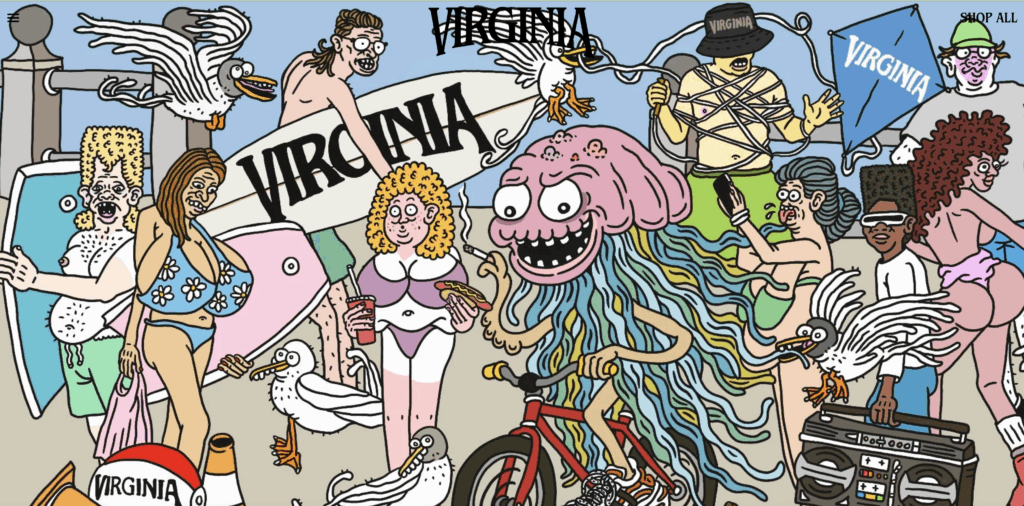
Pharrell Williams has unveiled VIRGINIA, a groundbreaking new creative platform that goes beyond the limits of music and branding to create an interconnected ecosystem of art, design, fashion, and community. Rooted in his personal identity and hometown pride, VIRGINIA is described by Pharrell as both “where I’m from and who I am creatively.” It is designed as a place for dreamers—a cultural meeting ground where talent, innovation, and collaboration come together. The platform offers a wide range of experiences and opportunities. It will host live music and community events, giving local and emerging artists a stage alongside Pharrell’s own creative ventures. It includes lifestyle merchandise and gear—from surfboards and swimwear to accessories and apparel—showcasing bold VIRGINIA branding. Pharrell has also partnered with Adidas to release the VIRGINIA Adidas Jellyfish sneaker, demonstrating his ability to merge streetwear, culture, and high design. The interactive side of the project lives on Blackyachtrock.com, a digital hub where fans can access exclusive content, virtual karaoke, and unique visuals by Virginia Beach artist Sam Clayman, while also gaining early access to music and product releases. VIRGINIA also marks the launch of Pharrell’s new genre-bending project, BLACK YACHT ROCK VOL 1: CITY OF LIMITLESS ACCESS, which he describes as a fresh sonic landscape blending cultural roots and innovation. At the same time, Pharrell is reimagining the physical landscape of his hometown with Atlantic Park, a $330–$350 million surf and culture destination in Virginia Beach. Built on the historic Dome site, this massive redevelopment includes a Wavegarden Cove surf lagoon capable of producing up to 1,000 waves per hour, catering to both beginners and professionals. The complex also features The Dome entertainment venue, residential units, retail shops, restaurants, and cultural spaces designed to revitalize the area. After years of planning and development, Atlantic Park officially opened on August 11, 2025, transforming Virginia Beach into a world-class surf and cultural hub. Together, VIRGINIA and Atlantic Park represent Pharrell’s boldest move yet—bridging digital creativity and physical innovation. Through these projects, he is simultaneously honoring his roots and elevating them to a global stage. VIRGINIA serves as a cultural platform for music, fashion, and design, while Atlantic Park stands as a testament to urban revitalization and community-driven entertainment. Pharrell has successfully united sonic waves with ocean waves, turning his hometown of Virginia Beach into both a symbolic and literal epicenter of limitless creativity and possibility.
Afiya Ricks: Shaping Financial Legacies for Future Generations

As we celebrate Women’s History Month, we honor trailblazers like Afiya Ricks, a financial advisor whose mission is to inspire and educate individuals about various aspects of finance. Afiya has been licensed 25 in finance and has dedicated her career to helping others build wealth while continuing to expand her own financial knowledge. What’s Your Financial Brand? Afiya Ricks embodies a financial brand that is deeply rooted in education, empowerment, and action. Her philosophy is simple: continuously learn, inspire others, and take decisive steps toward financial independence. She believes that financial literacy is not just about understanding numbers but about recognizing and maximizing one’s financial worth. Be the First Generation to Take Action Afiya emphasizes the importance of breaking generational cycles by taking the first step toward financial stability. Whether it’s eliminating debt, owning property, or creating a lasting financial legacy, she advocates for proactive engagement rather than passive discussion. Instead of waiting on the sidelines, she encourages individuals to be the first in their family to make strategic financial moves. Investing: Taking a Chance for Future Prosperity Many families are generations behind in starting the investment journey. Afiya stresses that someone must take the leap and begin the process — just as they would in homeownership or entrepreneurship. The stock market may seem daunting to newcomers, but it has been a powerful tool for wealth creation for centuries. Learning and adapting are key to long-term financial success. Knowledge is Power: Stay Informed and Take Action In a world where misinformation is rampant, Afiya underscores the importance of seeking knowledge from regulated and credible sources. Social media and sensationalized news are not substitutes for professional financial education. She urges individuals to understand their financial value, identify areas for growth, and actively work towards increasing their financial potential. A Trailblazer in Finance Afiya Ricks has spent over two decades in the financial services industry, consistently ranking as the #1 investment product wholesaler. She has played a pivotal role in raising over $2 billion in assets while working for two Fortune 500 companies. Her extensive Wall Street experience includes collaborating with financial firms and advisors to distribute mutual funds, ETFs, unit trusts, and annuities. Currently holding her Series 7 (used as Series 6), Series 26, and Series 63 FINRA licenses, along with multiple life insurance licenses, Afiya remains a powerhouse in the financial sector. Her dedication to financial education and wealth-building continues to inspire those looking to take control of their financial future. This Women’s History Month, we celebrate Afiya Ricks not only for her accomplishments but for her unwavering commitment to helping others build financial legacies that will last for generations to come. Contact Afiya Ricks
MakingABrand supports Pharrell Williams’ Black Ambition 5th Annual Competition
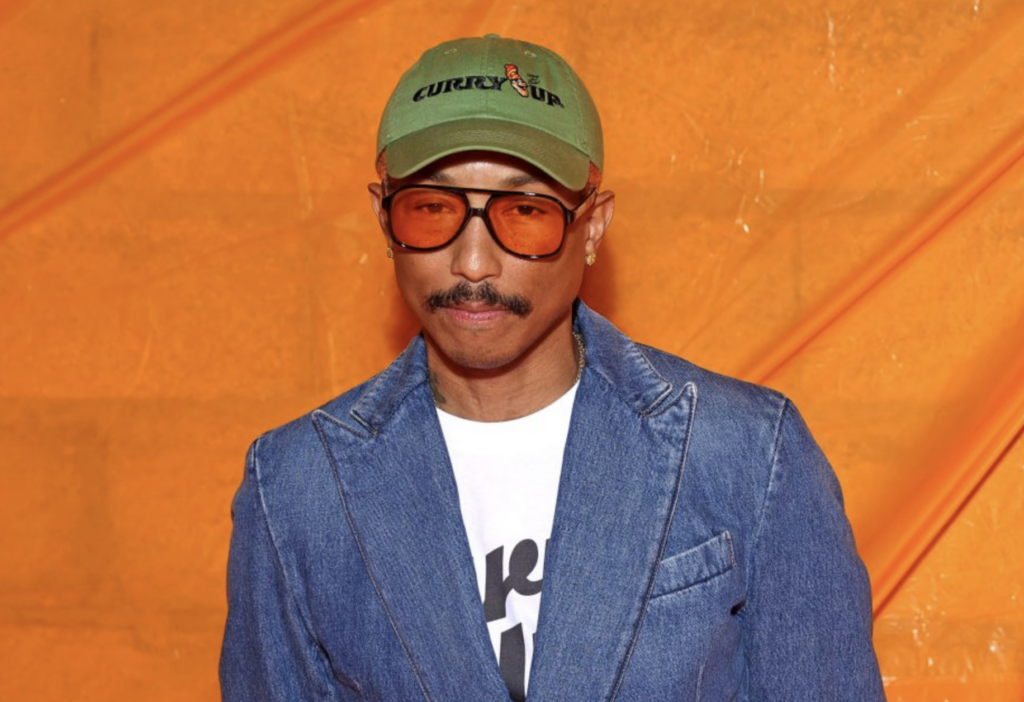
Pharrell Williams’ ‘Ambition’ Million Dollar Prize Contest is a game-changer for entrepreneurs, creatives, and visionaries looking to make an impact. As someone who has dedicated my career to building brands, empowering talent, and fostering innovation, I wholeheartedly support initiatives like this that provide opportunities for the next generation of rising stars. Championing the Next Generation of Entrepreneurs Throughout my career, I have always believed in the power of ambition, vision, and perseverance. From co-founding pioneering fashion brands like Mecca, Enyce, and Parish Nation to mentoring emerging creative entrepreneurs, my mission has been to uplift those who are ready to push boundaries and redefine industries. Pharrell’s contest aligns perfectly with MakingABrand’s mission, offering a life-changing opportunity for those who dare to dream big. Providing Mentorship and Guidance Success is not just about having a great idea—it’s about execution, strategy, and resilience. I am passionate about sharing my knowledge and experience with young creative entrepreneurs to help them navigate the complexities of business, branding, and growth. Whether through one-on-one mentorship, speaking engagements, or advisory roles, I take pride in guiding visionaries toward sustainable success. Advocating for Funding and Visibility One of the biggest hurdles for up-and-coming entrepreneurs is access to capital and exposure. Contests like ‘Ambition’ provide not just financial backing but also invaluable visibility. I have long supported initiatives that bridge the gap between talent and opportunity, ensuring that groundbreaking ideas don’t go unnoticed due to a lack of resources. Empowering Diverse Creators and Innovators Diversity in business and creativity is essential for progress. My commitment to supporting contests like ‘Ambition’ stems from the belief that innovative voices from all backgrounds should have the chance to be heard and celebrated. By backing programs that uplift underrepresented entrepreneurs, I aim to foster a more inclusive and dynamic business landscape. Encouraging Strategic Brand Building A strong brand identity is crucial for any entrepreneur looking to scale. Having built multiple successful brands, I understand the importance of storytelling, positioning, and authenticity. Through my support, I strive to equip aspiring business owners with the tools they need to craft compelling brand narratives that resonate with their audience and attract investors. The Future of Entrepreneurial Support Pharrell’s ‘Ambition‘ award is just one of many programs that inspire me. Moving forward, I will continue to champion initiatives that provide financial support, mentorship, and strategic guidance to those determined to make their mark. Success is a journey, and I am committed to helping the next generation of leaders navigate their path to greatness. If you’re an aspiring entrepreneur or creative, I encourage you to seize opportunities like this, believe in your vision, and never stop pushing forward. The world is waiting for your brilliance—let’s make it happen together. We at MakingABrand are here to help guide you to your success.
Maurice Malone: The Streetwear Pioneer Who Became a Denim Master
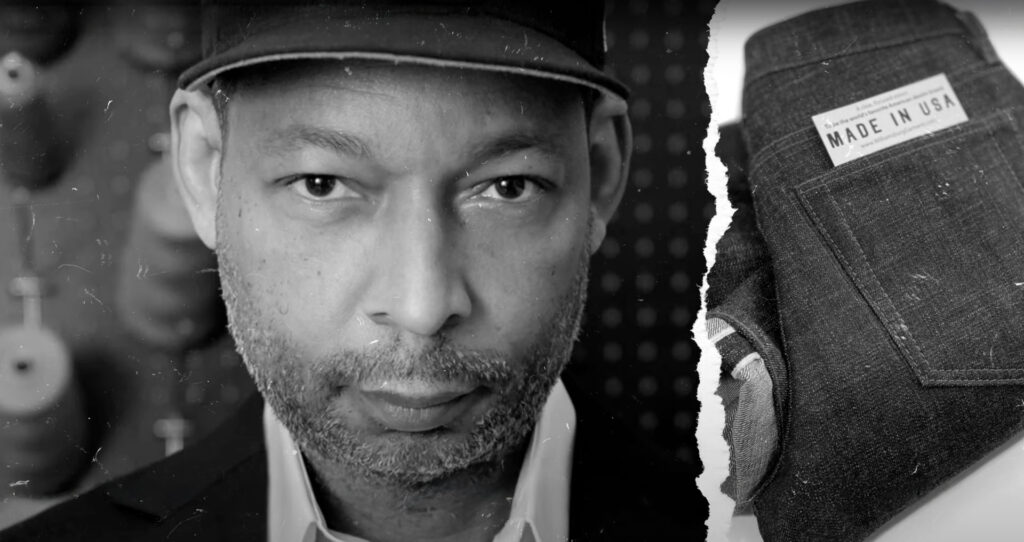
A Black History Month Tribute to a Streetwear Icon When discussing the pioneers of streetwear, few names carry the weight of Maurice Malone. A visionary in African-American streetwear, Malone revolutionized urban fashion in the late 1980s and 1990s, bridging the gap between hip-hop culture and high-end denim design. His journey from Detroit’s underground fashion scene to becoming an internationally recognized denim artisan is a testament to his innovation, resilience, and expertise. Malone’s story is deeply intertwined with the evolution of hip-hop and urban fashion. His early work placed him alongside streetwear legends like Tony Shellman of Mecca and Enyce, Karl Kani and April Walker of Walker Wear, but his relentless pursuit of craftsmanship as a denim designer set him apart. From Streetwear to High-End Denim: Maurice Malone’s Evolution Maurice Malone began his career in the late 1980s, designing bold, oversized apparel that became synonymous with ’90s hip-hop street style. His brand, Maurice Malone, gained rapid traction in the underground scene before becoming a nationwide phenomenon. His ability to merge urban aesthetics with high-quality craftsmanship made him a favorite among artists and streetwear enthusiasts. Building an Iconic Streetwear Brand in the ’90s In the early 1990s, Maurice Malone played a pivotal role in shaping Detroit’s hip-hop and streetwear scenes by opening The Hip-Hop Shop on 7-Mile Road. More than just a clothing store, it became a cultural hub and incubator for emerging artists, hosting legendary open mic battles and freestyle sessions that helped launch the careers of Eminem, J Dilla, Proof, and Slum Village. The shop’s influence extended beyond fashion, solidifying itself as a cornerstone of Detroit’s underground hip-hop movement. Through his vision, Malone provided a space where artists could hone their craft and connect with like-minded creatives, leaving a lasting impact on both fashion and music. For a deeper dive into Maurice Malone and the history of The Hip-Hop Shop, check out his site. By the mid-’90s, Malone was a staple in the fashion industry, with his designs appearing in major hip-hop music videos, magazines, and runways. His brand was one of the few Black-owned streetwear labels to gain mainstream recognition, paving the way for future generations of designers. Becoming a Denim Expert and the Art of Alteration While many streetwear pioneers remained focused on graphic tees and oversized fits, Malone took a different path. He studied denim construction in-depth, leading him to become one of the most respected denim experts in the industry. In the early 2000s, he transitioned from traditional streetwear into high-end denim manufacturing, founding Williamsburg Garment Company. His mastery of denim craftsmanship, tailoring, and alterations helped redefine how premium jeans were made. His expertise in fabric sourcing, sewing techniques, and garment alteration has made him a sought-after consultant in the fashion industry. Today, Malone is known for his unmatched ability to alter and customize denim to create perfect fits. His work reflects decades of experience, making him a go-to resource for both designers and customers looking for high-quality denim craftsmanship. 40 Years of Experience: Teaching the Next Generation After nearly four decades in the industry, Maurice Malone has shifted his focus toward education and mentorship. His journey from streetwear trailblazer to denim master is now a learning experience for up-and-coming designers, tailors, and entrepreneurs. On Making A Brand, Malone shares his insights on denim design, alterations, and brand-building, helping aspiring fashion professionals refine their craft. His dedication to teaching ensures that the next generation of Black designers has access to the knowledge needed to succeed in an increasingly competitive industry. For those looking to purchase jeans online, Malone has created a detailed tutorial on how to accurately measure denim for the perfect fit. Watch the video below to learn his expert tips for online jean shopping. Learn More About Maurice Malone & Denim History Ready to take your denim expertise and fashion brand to the next level? Join Maurice Malone’s exclusive course on Making A Brand, where you’ll learn directly from a 40-year industry veteran. Gain insider knowledge on denim construction, alterations, and brand-building from one of the most respected names in streetwear and fashion. Reserve your spot today and start learning from a true pioneer! Enroll Now Resources & References: Williamsburg Garment Company MauriceMaloneUSA.com The Hip Hop Shop.com Music Origins Project
The 3 Pillars of Successful Branding: A Guide from Tony Shellman

When it comes to branding your business, understanding the foundation of your brand is critical to your success. Building a recognizable and trusted brand requires intention and strategic planning. Below, I outline three fundamental pillars of branding: owning your intellectual property, product development, and targeting your market. 1. Own Your Intellectual Property (IP) The most common first mistake is not owning your intellectual property. Otherwise known as IP. Owning your IP is essential for protecting your brand’s identity and uniqueness. This includes trademarks, copyrights, and patents, which safeguard the elements that differentiate your business from competitors. For instance, registering your logo, slogan, or product design ensures no one else can legally use them, giving you exclusive rights. Establishing clear ownership of your IP not only enhances your credibility but also adds value to your business. Investors and customers are more likely to trust a brand that has taken steps to secure its assets. Neglecting this step could lead to costly legal battles or the loss of your brand’s distinctiveness. Throughout the years I have seen many startups spend money developing their business and not own the name of the business or the product they are selling. This is a very costly mistake. You cannot have a brand if you don’t own the IP. 2. Develop a Superior Product or Service No branding effort can succeed without a high-quality product or service at its core. Product development should align with your brand’s values or DNA and meet the needs of your target audience. It’s about more than just functionality—it’s about delivering an experience that leaves a lasting impression. Think of iconic brands like Apple or Nike. Their products are not only well-made but also resonate emotionally with their customers. Focus on innovation, reliability, and aesthetic appeal. Continuously improve your offerings to ensure they stand out in a competitive market. 3. Identify and Understand Your Target Market Who are you selling to? Defining your target market is vital to branding success. Your audience determines your messaging, pricing, and marketing strategies. The better you understand their preferences, pain points, and buying behaviors, the more effectively you can tailor your brand to resonate with them. For example, if your target market consists of eco-conscious millennials, your brand should emphasize sustainability and authenticity in its messaging and product offerings. Conduct market research to refine your understanding of your audience and maintain a customer-centric approach in all aspects of your branding. At MakingABrand, we teach all these steps and so much more. Building a successful brand takes deliberate effort and strategic focus. By protecting your intellectual property, offering exceptional products or services, and understanding your target market, you create a brand that stands out and thrives. Branding is more than a logo or catchy slogan; it’s about forging meaningful connections and delivering consistent value. Implement these three elements, and you’ll be well on your way to establishing a brand that commands trust and loyalty. By Tony Shellman
MakingABrand Joins Homage Awards and FIT for the screening of IN Vogue: The 90s – Episode 5 – Streetwear
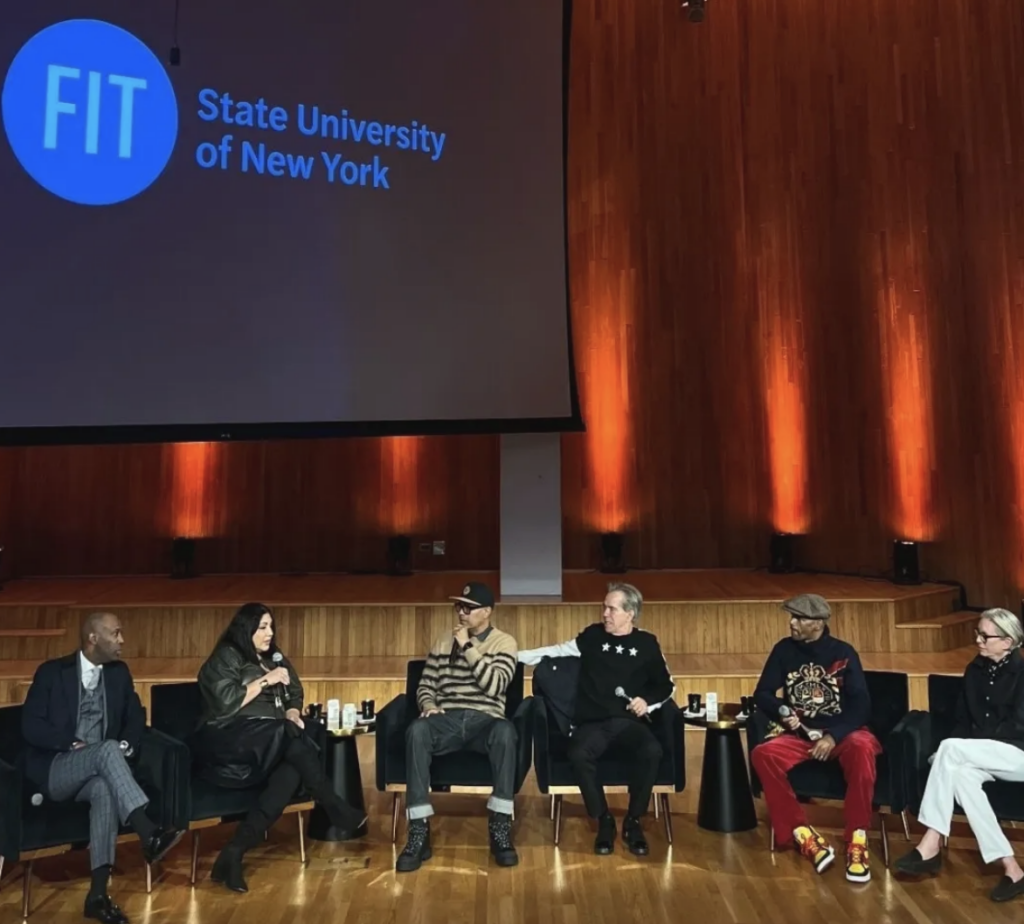
MakingABrand proudly sponsored Homage Awards for an exclusive screening at the Fashion Institute of Technology (FIT) for Hulu’s exclusive film IN Vogue: The 90s, Episode 5 – Streetwear , which focused on the history and evolution of streetwear. The event brought together visionaries, industry legends, and aspiring fashion innovators to reflect on the impact of streetwear on global style, art, and culture. Esteemed panelists Andy Hilfiger, Peter Paul Scott, Professor Elena Romero and J. Alexander from FUBU enriched the evening with insights from their years of industry experience, giving attendees a unique perspective on the growth of streetwear. The panel discussion featured Andy Hilfiger, a key player in fashion’s crossover with music, Peter Paul Scott, an industry innovator and founder of Homage Awards, and Elena Romero, a scholar and expert on urban fashion, offered rich insights into the social and cultural forces that powered streetwear’s rise. They discussed how streetwear grew from niche subcultures to a global style phenomenon, touching on the roles of music, and urban identity in shaping its unique aesthetic. Attendees appreciated their reflections on the genre’s evolution, learning how streetwear both reflected and influenced cultural shifts over the decades. The screening of Episode 5 of IN Vogue: The 90s, titled “Streetwear”, provided an in-depth look into the origins of street style and its ascent in the 1990s. Through archival footage, interviews, and commentary from iconic figures from the likes of Tommy Hilfiger, Dapper Dan, and Mary J. Blige. The episode captured the spirit of the era and highlighted streetwear’s transformation into a dominant force. The audience at FIT had the unique opportunity to explore how streetwear became an emblem of cultural expression, merging art, music, and social movements. MakingABrand’s sponsorship underscored its commitment to both honoring streetwear’s past achievements and supporting its future. By supporting events like the Homage Awards and educational screenings at FIT, MakingABrand celebrated the pioneers of urban culture while encouraging future leaders to keep pushing boundaries. For MakingABrand, streetwear symbolized more than just a trend—it represented a lifestyle and a movement, honoring the art and self-expression of a continually evolving culture. The Homage Awards + FIT screening of IN Vogue: The 90s: Episode 5 – Streetwear was open to students, industry insiders, and streetwear enthusiasts, offering a memorable retrospective of the icons and events that have defined street style for generations. MakingABrand also took the opportunity to announce its new subscription-based platform, designed to support and inspire creative entrepreneurs and fashion enthusiasts worldwide. The platform will offer exclusive content, industry insights, and resources tailored to those looking to make their mark in fashion, art and design, film and other entrepreneurial endeavors. Attendees and fans alike were invited to register for updates to be the first to access exclusive offerings, including expert interviews, trend analyses, and more. Join MakingABrand for the ultimate creative entrepreneurial experience by registering on their platform today and stay connected for the latest in fashion innovation and inspiration!
Aligning the Starter Brand with Jermaine Dupri and Usher at the Atlanta Braves Game

When you talk about branding, it’s more than just slapping a logo on something and calling it a day. It’s about tapping into culture, understanding the audience, and creating a moment that sticks with people. That’s what happened recently when I had the opportunity to align Starter — the iconic sports brand — with two Atlanta legends, Jermaine Dupri and Usher, for the throw-out pitch at an Atlanta Braves game. Starter is more than just a sports brand; it’s a cultural staple. It’s that connection to both sport and street culture that makes Starter a perfect fit for a moment like this. When I was thinking about how to elevate the throw-out pitch at the Braves game, I knew Starter would bring the authenticity and credibility needed to make the event resonate. Jermaine Dupri and Usher are Atlanta royalty, and I wanted to tap into their deep ties to the city. Starter’s long history in sportswear, combined with its undeniable street cred, made it the ideal brand to represent the intersection of Atlanta’s music scene and its love for sports. From the start, the vision was to create a moment that felt true to the culture of Atlanta. I wanted Jermaine and Usher to embody the essence of Starter — bold, confident, and rooted in heritage. But it wasn’t just about wearing the gear; it was about creating a narrative that blended music, fashion, and sports into one seamless story. Jermaine has always been a trendsetter, and Usher’s style speaks for itself, so the challenge was to fuse their individual looks with the iconic Starter brand in a way that felt fresh yet timeless. Starter is all about legacy, and so are these two. By aligning the brand with these icons at the game, we were making a statement about Atlanta’s influence on culture as a whole. When the day of the game arrived, we knew the throw-out pitch was more than a ceremonial act — it was an opportunity to showcase the power of collaboration. As Jermaine Dupri walked onto the field in their custom Starter gear, the crowd erupted. The Starter jackets, with the signature star logo, instantly became a focal point of the event. The connection between the brand, the artists, and the city of Atlanta was clear, and it was something everyone could feel. Starter has always been about representing more than just the team — it’s about representing culture, pride, and the energy of the streets. Jermaine and Usher embodied that spirit as they stepped up to the mound. It was a branding moment that spoke directly to the heart of the city. Branding is about timing and amplification, and we made sure this moment didn’t stop at the stadium. We had a strong social media strategy in place to maximize the exposure Starter would get from this collaboration. From pre-game teasers to live coverage and post-event highlights, we made sure that the visual story of Jermaine Dupri, Usher, and Starter was seen by fans far beyond Atlanta. Starter’s legacy in sportswear is undeniable, but this event allowed us to reinforce the brand’s connection to music and culture. It wasn’t just about selling jackets; it was about making people feel like they were part of something bigger — a cultural movement. This experience with Starter, Jermaine Dupri, and Usher at the Braves game is just the beginning. It was a reminder that when you align a brand with culture — authentically and intentionally — you can create moments that go beyond the product and into the hearts of the people. Aligning Starter with Jermaine Dupri and Usher at the Atlanta Braves game was about more than sportswear; it was about making a statement on the convergence of culture, music, and sports. We didn’t just throw out a pitch; we threw out a brand moment that spoke to Atlanta’s soul and Starter’s legacy. – Tony Shellman
Elevate Your Brand: Harnessing AI for Next-Level Branding Success

In today’s fast-paced digital world, the success of a company’s branding efforts can significantly influence its overall growth and market position. As technology evolves, Artificial Intelligence (AI) has emerged as a powerful tool that can revolutionize how companies approach branding. From creating personalized customer experiences to optimizing marketing strategies, AI offers a plethora of opportunities for enhancing brand identity and engagement. Here’s how AI can help your company’s branding efforts soar to new heights. Personalization is key to modern branding. AI algorithms can analyze vast amounts of data to understand individual customer preferences and behaviors. This enables companies to deliver highly personalized content, recommendations, and experiences. For instance, AI can tailor email marketing campaigns based on a customer’s past purchases, browsing history, and interests, making the communication more relevant and engaging. AI-powered analytics tools can sift through large datasets to extract valuable insights about your customers. These insights can help you understand customer sentiment, preferences, and trends. By analyzing social media interactions, reviews, and feedback, AI can provide a comprehensive view of how your brand is perceived in the market. Creating engaging content is crucial for branding, but it can be time-consuming and resource-intensive. AI can streamline content creation by generating high-quality content tailored to your brand’s voice and audience. AI-driven tools can write blog posts, social media updates, and even design graphics, saving time and ensuring consistency in brand messaging. Platforms like Copy.ai use AI to generate compelling copy for various purposes, from advertising to blog writing. This allows your marketing team to focus on strategic initiatives rather than getting bogged down by content creation. AI enables data-driven decision-making by providing actionable insights from complex datasets. This capability is invaluable for refining your branding strategies. AI can identify patterns and trends that might not be apparent through traditional analysis methods, guiding your marketing efforts towards what works best for your audience. Predictive analytics powered by AI can forecast future trends and consumer behaviors, allowing your brand to stay ahead of the curve. By anticipating market shifts and customer needs, you can proactively adjust your branding strategies and maintain a competitive edge. AI-driven visual recognition technology can enhance your branding by providing interactive and immersive experiences. Augmented reality (AR) allows customers to visualize products in real-world settings, bridging the gap between online and offline experiences. Integrating AI into your branding strategy offers immense potential for creating more personalized, efficient, and impactful branding efforts. From gaining deeper customer insights to optimizing content creation and enhancing customer service, AI empowers your company to build a stronger, more resonant brand. By leveraging AI, you can stay ahead in the competitive market landscape, ensuring that your brand not only survives but thrives. Embrace AI today and watch your branding efforts transform, driving greater engagement, loyalty, and growth for your company.
The New Wave: How Independent Creators are Outpacing Traditional Branding Agencies

The landscape of branding is experiencing a major shift. Traditional branding agencies, despite their polished campaigns and hefty budgets, are struggling to keep up with the authentic, engaging content produced by young, independent creators. This transformation is reshaping how brands connect with their audiences. Legacy models that prioritize high production values and conventional channels like TV and print are losing their impact. Large agencies, with their bureaucratic processes, often fail to respond swiftly to the dynamic digital world. In contrast, young creators excel on platforms like TikTok, Instagram, and YouTube, where authenticity and relatability reign supreme. Consumers today crave genuine content and can easily spot insincerity. Traditional ads often appear overly polished, while content from young creators feels more genuine and relatable. This authenticity builds strong connections, trust, and loyalty among audiences. Digital platforms have democratized content creation, enabling anyone with a smartphone to produce and share content. Brands must adapt by prioritizing agility, authenticity, and audience engagement. The shift towards digital native content creators is an exciting opportunity for brands. By learning from these creators and embracing authenticity, brands can forge lasting connections with their audiences. Those who adapt will lead the future of branding. Read more on our Making A Brand LinkedIn Page
Exploring The Rise of High-End Streetwear: Denim Tears
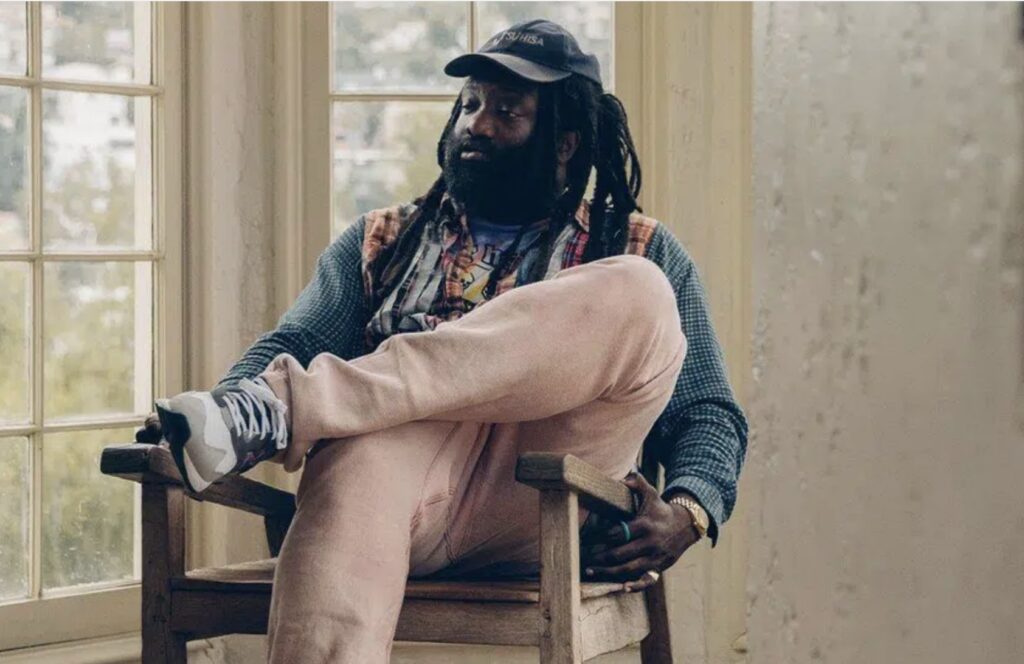
In the dynamic realm of fashion, trends ebb and flow, yet one trend has steadily surged in recent years: high-end streetwear. As luxury sales decline, brands like Denim Tears are seizing the spotlight, captivating fashion aficionados with their fusion of opulence and urban flair. The conventional luxury fashion scene, known for its exclusivity and steep prices, has witnessed a noticeable shift in consumer preferences. Millennial and Gen Z shoppers, now dominant in the market, are drawn to brands offering a more relaxed, accessible, and street-inspired style. This shift mirrors a broader cultural wave valuing authenticity, inclusivity, and individuality over traditional luxury norms. Denim Tears stands as a beacon of innovation, boldly embracing the seismic shift in fashion preferences and carving a distinctive niche in the realm of high-end streetwear. Spearheaded by the visionary designer Tremaine Emory, formerly a creative force at Supreme, Denim Tears seamlessly melds the opulence of luxury fashion with the raw energy of streetwear, crafting garments that speak to a diverse and fashion-forward clientele. To delve deeper into the evolution of high-end streetwear and its impact on the fashion landscape, read more on our LinkedIn account, MakingABrand. Join the conversation and stay updated on the latest trends shaping the industry.
